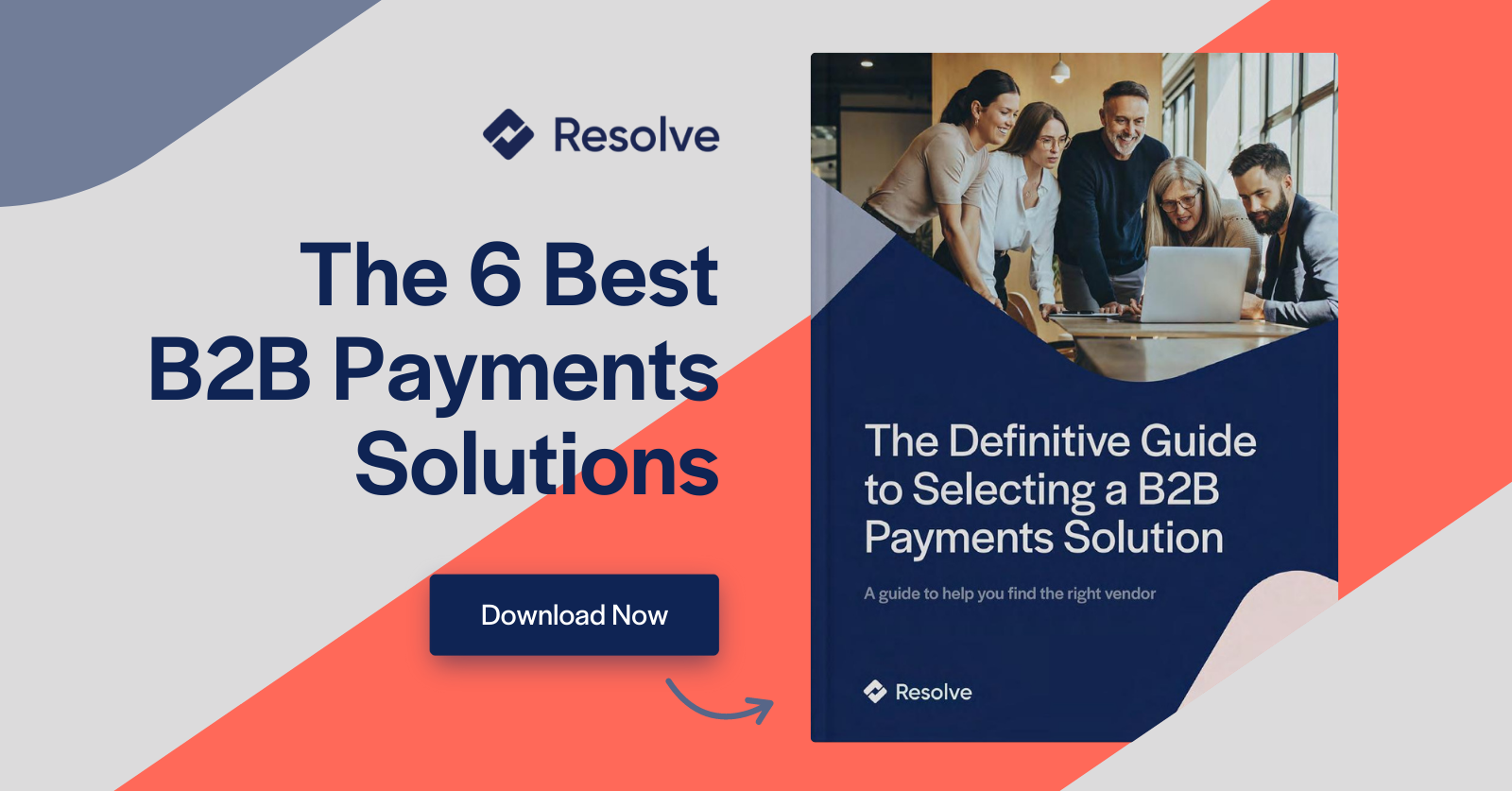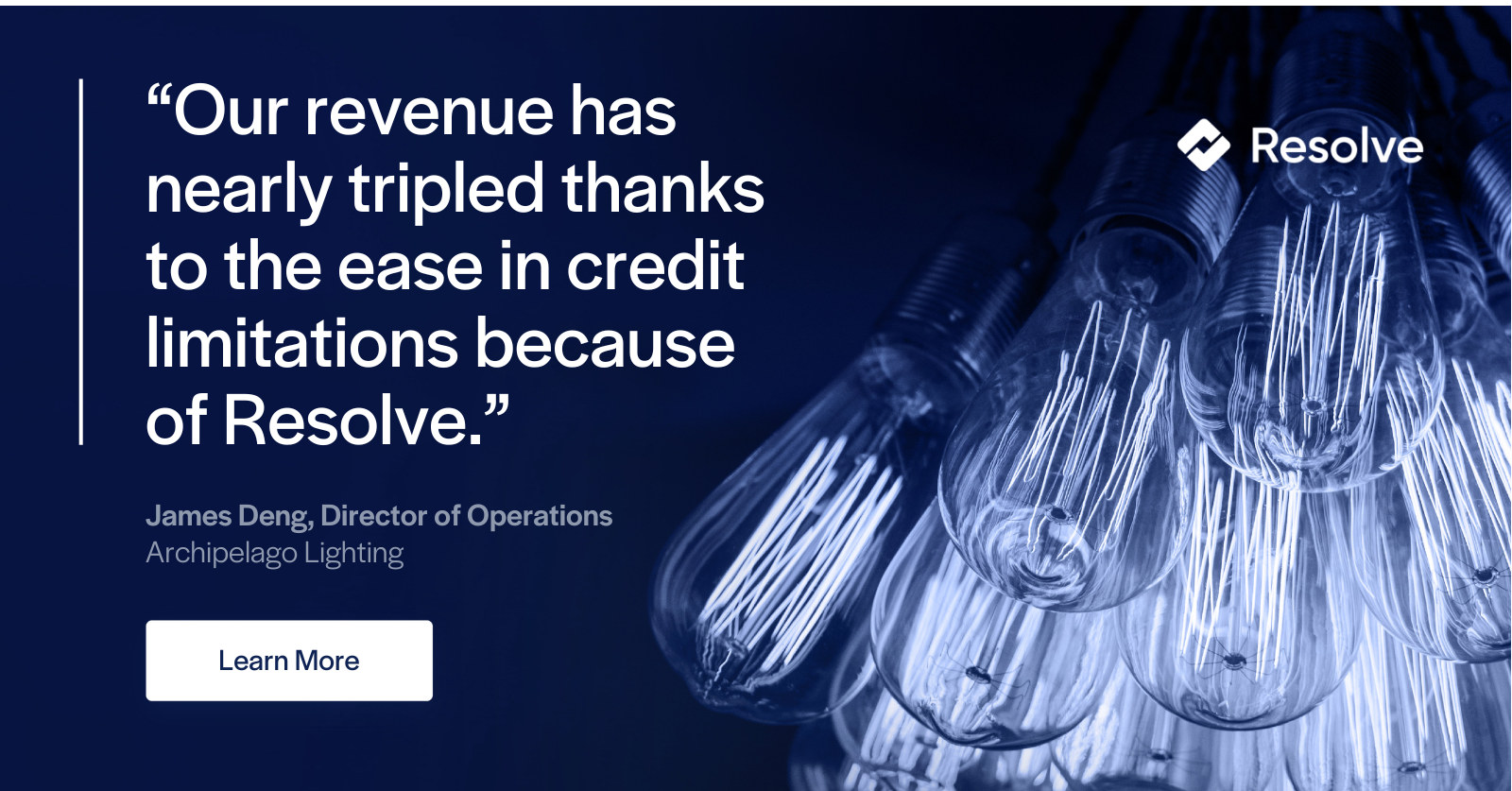According to Deloitte, 30 percent of middle-market businesses believe payment processing time is a major issue. In fact, many businesses take up to 30 days to complete a simple payment, and the typical accounts payable (AP) department spends nearly US$8 processing each supplier payment.
Despite these statistics, it’s all too common for businesses to accept slow processing times and late payments as the status quo. The truth is, no B2B business should have to tolerate inefficient payment processes.
The good news is, you don’t have to. With rapid advancements in corporate payments and fintech, B2B payment gateway software has become a powerful tool for businesses looking to streamline their cash flow and foster sustainable growth. These solutions automate payment processing, reduce errors, and speed up the time it takes to settle invoices, ultimately improving liquidity and operational efficiency.
In addition to improving speed and reducing costs, implementing advanced payment solutions can help businesses better manage supplier relationships by ensuring timely payments and enhancing trust. By optimizing payment processing, businesses can free up valuable resources to focus on growth initiatives, such as expanding their customer base or investing in innovation.
What are B2B payments
B2B (or business-to-business) payments are the transfer of one business’s capital in exchange for another business’s goods or services. This exchange can also happen between a business and a contractual worker (like a freelancer or a consultant). Transactions like this are great for ad-hoc payments, as well as recurring payments, depending on the contractual terms put in place.
For many startups and small businesses, corporate payments are managed on an ad-hoc basis, and many still use old fashioned paper checks to make payments. However, for mid-market and enterprise organizations, digital B2B payment solutions create more efficient financial processes and help to positively improve a business’s cash flow position.
Okay, so what exactly are B2B payment terms?
B2B payment terms (otherwise known as “net terms”) are the financial conditions that the payee is required to meet in order to complete a sale. These conditions are communicated by the seller and state how a buyer can make a payment, and how long they have to make it.
Traditionally, net terms are either 30, 60, or 90 days, meaning the buyer must make final payments within one of these time frames. However, net terms invoicing like this is becoming obsolete. Instead, challenger payment solutions (like us!) streamline B2B payments and electronic invoicing, providing a modern payment experience that benefits both payee and payer.
The main types of B2B payment methods
There are many ways for a business to make (and accept) corporate payments. Depending on what you choose, these payment options often come with specific B2B payment terms that can positively or negatively impact the payment cycle of your business.
Below, we outline the main types of B2B payment methods.
1. Credit cards
First and foremost is the corporate credit card. Credit card payments are commonplace for many B2C payments (otherwise known as business-to-consumer payments), and many types of credit cards come with their own set of transactional fees, interest rates, and payback terms, depending on the provider or financial institution.
Because of this, credit cards can quickly become a costly tool for businesses that process large quantities of transactions and who are prone to late payments. For many, this makes credit cards an unpopular choice for B2B payments. However, if credit cards are treated more like a debit card and paid off in full each month, it can be a highly beneficial form of payment.
2. ACH payments (Automated Clearing House)
ACH (automated clearing house) payments are another type of payment method. These B2B payments are more common among mid-market and enterprise organizations, and payments go through something called an “Automated Clearing House Network”, which is managed by a not-for-profit organization called the National Automated Clearing House Association (or NACHA for short).
Compared to credit cards, ACH payments often carry smaller fees (typically less than $1 per transaction) and enable businesses to complete a transaction within one to three business days. They’re also known as direct deposit payments, e-checks, or direct pay.
3. Wire transfers
Wire transfers essentially cut out the middle man–this is a direct bank transfer and money goes from the buyer’s bank account and is deposited directly to the seller’s bank account.
This payment method is often used to move large amounts of money, and to someone who is trustworthy to the buyer. Wire transfers often come with hefty processing fees, making them a less-than-ideal way to make B2B payments.
4. PayPal and other payment aggregators
PayPal, Venmo, Square, Google Pay… the list of “digital wallets” is getting longer and longer each and every day. And for good reason. These platforms are often used to electronically transfer money from one account to another and payments can be made quickly and easily (and oftentimes from a user-friendly mobile app).
As a B2B payment method, however, digital payment methods like these are seldom used. This is because they often come with fees higher than other methods of B2B payments. Instead, payment aggregators are often used for online payments in eCommerce scenario or for P2P (or peer-to-peer) payments because of their ease of use and quick processing times.
5. Paper checks
Paper checks are a tried and tested method of making B2B payments. Despite their familiarity among business transactions–and their flexibility when it comes to B2B payment terms–paper checks are a manually-exhausting way to make purchases, especially for businesses making multiple payments, to multiple suppliers, at all times.
B2B payment terms: 3 critical challenges for high-growth businesses
While beneficial to almost all businesses, B2B payments come with their own set of challenges. Overcoming these requires considered planning, strategic maneuvering, and oftentimes, a B2B payments partner to make B2B transactions and electronic payments that much easier.
Here are three common B2B payment challenges for high-growth organizations.
1. Scaling and managing B2B payments is complex
Unsurprisingly, as a business grows, so does transaction volume. After all, it takes money to make money, and with more people on board purchasing larger quantities of goods and services, financial management can become complicated. For many AP teams, payment processing is a manual and time-consuming activity that requires good attention to detail and a focused mind. It’s no surprise, then, that as organizations scale, so does the complexity of payments. There’s more paperwork to track, more data to analyze, and more “boots on the ground” work to complete, and oftentimes, there are few resources available to assist.
2. International payments are slow (and expensive)
International payments (or cross-border B2B payments) are a complicated beast all of their own, and they often require more forethought and planning.
If you have to make a payment overseas, remember to consider these two things:
- Can you track your payment as it crosses a border?
- What financial compliance and regulatory laws may prevent a successful transaction?
If you can’t answer one of these questions, you may want to consider alternative payment methods or work with third parties who can assist you. You might also want to consider finding local vendors who you can pay in your own currency.
3. Fraud, visibility, and processing times
As we explain above, scaling businesses face scaling complexity. And without the right foundations or tools in place, businesses will find themselves unable to manage and process B2B payments in a timely manner.
As complexity scales, then, so does the risk of fraud. What’s more, accounts payable and accounts receivable teams often lose visibility into money leaving the business, and payment processing timelines get longer and longer.
Enter accounting software...
Why companies use B2B payment gateway software
There are multiple benefits to using a B2B payment system, especially when it comes to B2B payment processing. Along with faster, smarter, and easier payments, B2B payment platforms like Resolve also:
- Help you generate cash flow optimization and automation
- Automate and simplify your accounts payable and accounts receivable functionality in real-time (learn how Trenchless Supply managed their growing accounts receivable challenges)
- Improve your payments landscape by increasing versatility
- Improve your customer’s experience and increase B2B sales (learn how Archipelago tripled their revenue with Resolve)
To find out more about how Resolve can help your organization optimize its B2B payments terms, request a demo today.







